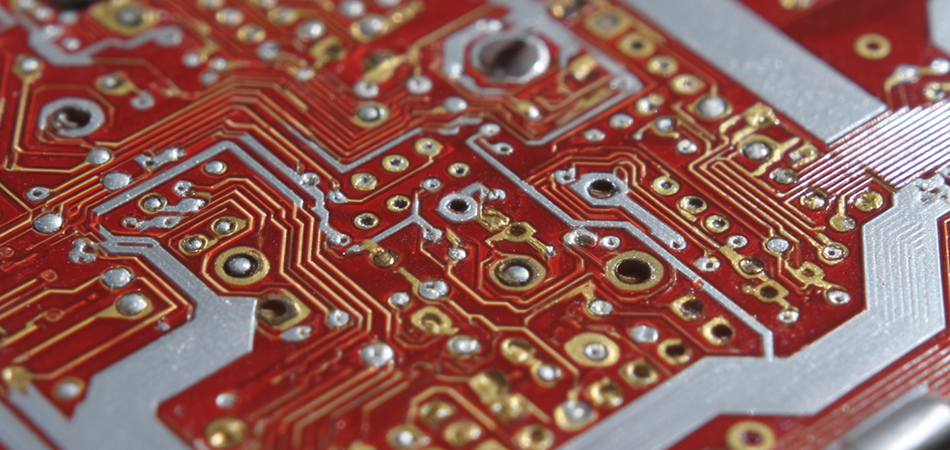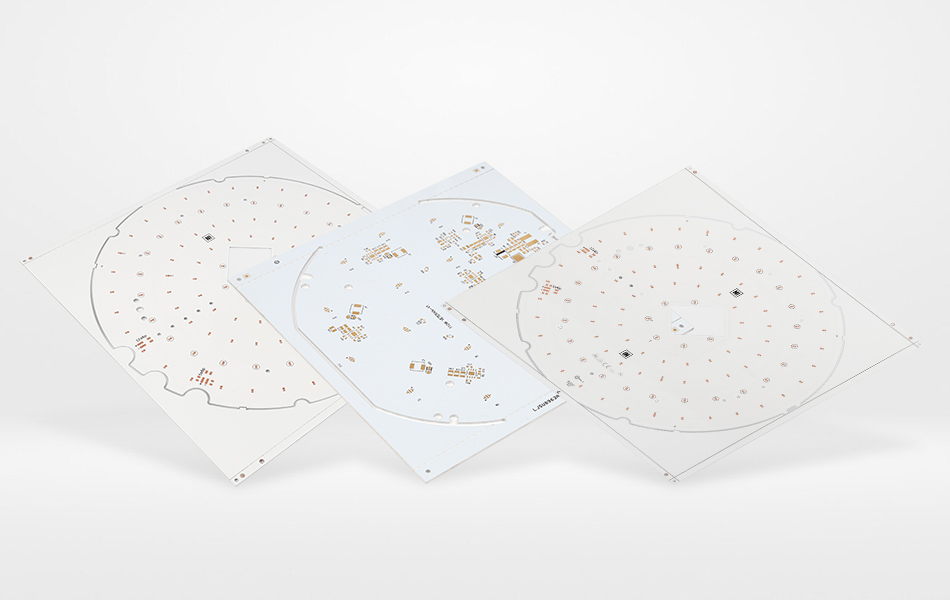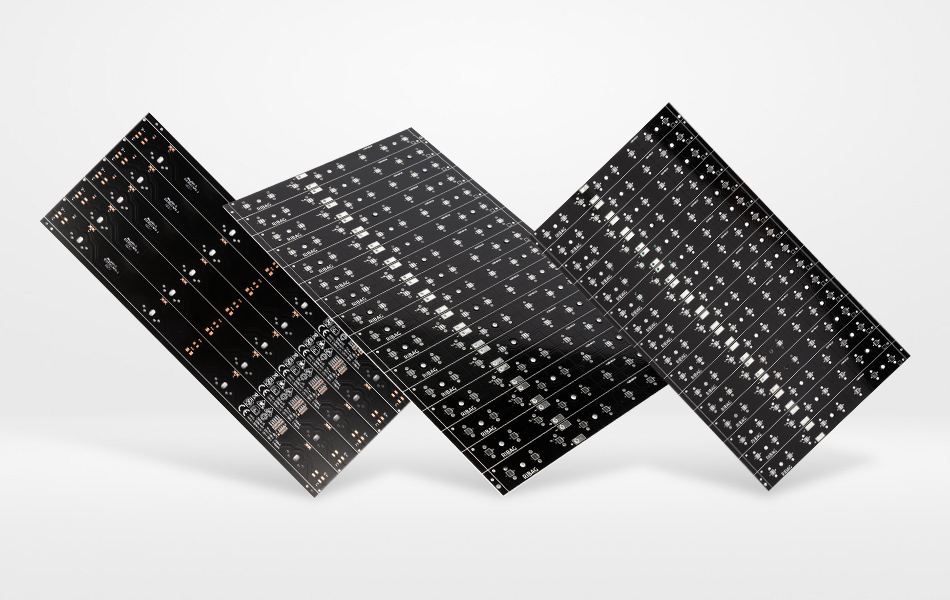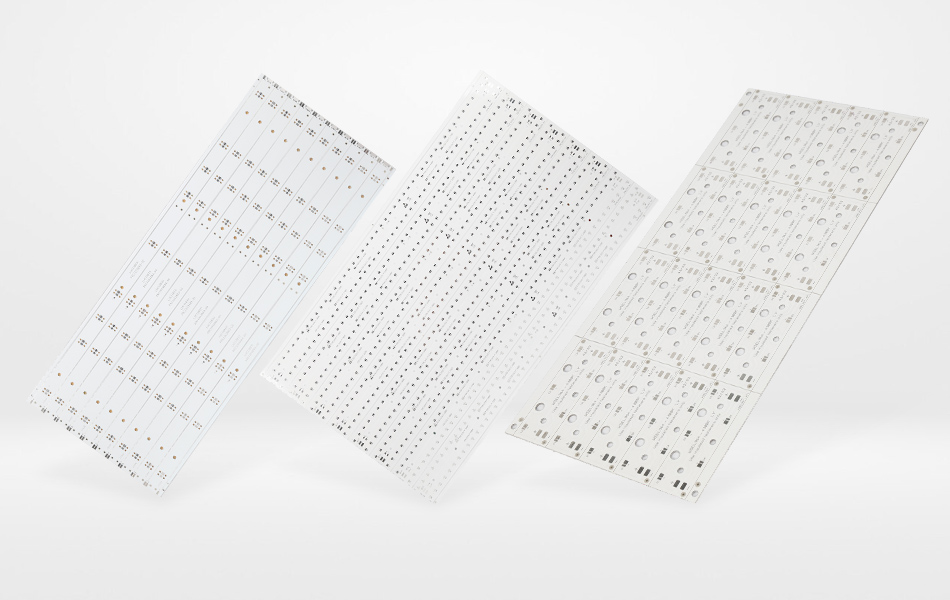-
- PCB TYPE
- PRINTED CIRCUIT BOARD PROTOTYPE ALUMINUM PRINTED CIRCUIT BOARD R&F PCB FPC HIGH FREQUENCY PCB HIGH-TG PCB HEAVY COPPER PCB HDI PCB PCB FOR LIGHTING METAL CORE PCB
time:Jun 23. 2025, 09:04:38
In the rapidly evolving electronics industry, the push for smaller, more powerful devices has brought thermal management to the forefront. Traditional PCBs often struggle to handle the heat from high - power components, leading to performance degradation and component failures. High Thermal Conductivity Al PCBs offer a solution by leveraging aluminum's excellent heat - transfer properties. This article delves into their structure, advantages, design, manufacturing, applications, market dynamics, and future trends.
Structure of High Thermal Conductivity Al PCBs
Layer Composition
A High Thermal Conductivity Al PCB comprises multiple layers. The aluminum substrate is the core, serving as the main heat - dissipation path while providing mechanical strength. The dielectric layer, situated between the aluminum and copper layers, insulates electrically and facilitates heat transfer, using specialized materials with enhanced thermal conductivity. The outer copper layers are patterned for electrical connections and also contribute to heat transfer from components to the aluminum substrate.
Material Selection
For the aluminum substrate, alloys with high thermal conductivity and good mechanical properties are chosen, balancing factors like strength, corrosion resistance, and cost. The dielectric layer often uses thermally conductive polymers filled with ceramic particles, optimizing the balance between electrical insulation and heat transfer. High - purity copper foils are selected for the copper layers, with thickness determined by current - carrying and heat - dissipation needs.

Advantages of High Thermal Conductivity Al PCBs
Exceptional Heat Dissipation
These PCBs efficiently manage heat from high - power components. The aluminum substrate quickly absorbs heat from copper layers and distributes it, keeping component temperatures within optimal ranges. This enhances device performance and reliability, preventing overheating - related failures.
Enhanced Durability
The aluminum substrate gives High Thermal Conductivity Al PCBs greater mechanical strength, making them resistant to bending, vibration, and shock. This durability is crucial in harsh environments, such as automotive applications, reducing maintenance and replacement requirements.
Improved Signal Integrity
The multi - layer structure and specialized dielectric materials of these PCBs reduce electromagnetic interference and crosstalk, improving signal integrity. This is vital in high - speed digital applications, ensuring reliable data transmission.
Environmental Friendliness
Aluminum's recyclability makes High Thermal Conductivity Al PCBs eco - friendly. Their efficient heat dissipation also reduces the need for additional cooling components, saving energy and contributing to sustainability.

Design Considerations for High Thermal Conductivity Al PCBs
Thermal Design
Component Placement
Strategic component placement is key for thermal management. Heat - generating components should be positioned to maximize heat transfer to the aluminum substrate, often near thermal vias. Grouping components by heat - generation levels and placing high - heat components in well - ventilated areas further enhances heat dissipation.
Thermal Via Design
Thermal vias are essential for heat transfer. Their size, number, and distribution must be optimized based on component heat output. Designers use software to simulate heat flow and determine the best configuration, creating efficient heat - transfer paths.
Heat - Sink Integration
In some applications, heat - sink integration is necessary. Good thermal contact with the aluminum substrate, achieved through thermal interface materials, and optimizing heat - sink design improve heat dissipation, enabling the PCB to handle higher heat loads.
Electrical Design
Trace Routing
Trace routing in these PCBs requires careful planning. Designers must consider signal integrity, impedance matching, and crosstalk, accounting for the aluminum substrate's impact on electromagnetic fields. Specialized software helps optimize trace dimensions and layout for reliable signal transmission.
Power and Ground Plane Design
Power and ground plane design is crucial for power distribution and reducing EMI. Integrating these designs with thermal design, such as using thermal vias to connect planes to the aluminum substrate, manages heat generated by electrical current, stabilizing the power supply.
Design for Manufacturability
Adhering to design for manufacturability principles simplifies production. Using standard component footprints, avoiding complex shapes, and ensuring compatibility with manufacturing processes reduce costs and shorten time - to - market.

Manufacturing Processes of High Thermal Conductivity Al PCBs
Material Preparation
The manufacturing process starts with material selection and preparation. High - quality aluminum sheets are cut to size, the dielectric material is mixed with fillers and processed, and high - purity copper foils are prepared to the required thickness.
Lamination
Lamination bonds the layers together using heat and pressure. Precise control of parameters like temperature, pressure, and time ensures a uniform bond, avoiding defects that could affect thermal and electrical performance.
Drilling and Plating
Drilling creates holes for vias and component mounting, followed by electroplating to coat holes with copper for electrical connections. Quality control in these steps is essential for PCB functionality.
Circuit Patterning
Photolithography is used for circuit patterning. A photosensitive resist is applied, exposed to UV light, developed, and then the copper is etched to form the circuits. Advanced techniques ensure accurate and high - quality patterns.

Applications of High Thermal Conductivity Al PCBs
LED Lighting
These PCBs are ideal for LED lighting, effectively managing the heat generated by LEDs. This maintains brightness, extends LED lifespan, and suits various lighting fixtures, including those in harsh environments.
Power Electronics
In power electronics applications like power supplies and motor drives, High Thermal Conductivity Al PCBs handle heat from high - power components, improving device efficiency and component lifespan.
Automotive Electronics
The automotive industry uses these PCBs in systems like ECUs and ADAS. Their heat - dissipation and mechanical strength ensure reliable operation in the harsh vehicle environment.
Aerospace and Defense
In aerospace and defense, where reliability is crucial, these PCBs withstand extreme conditions while managing heat, used in avionics, satellite equipment, and radar systems.
Consumer Electronics
Consumer devices like smartphones and laptops benefit from these PCBs. They manage heat from high - performance components, preventing throttling and extending device lifespan, enhancing the user experience.

Market Dynamics of High Thermal Conductivity Al PCBs
Market Growth
The global market for High Thermal Conductivity Al PCBs is growing steadily, driven by demand in LED lighting, automotive, aerospace, and consumer electronics. The need for better thermal management in advanced devices further fuels this growth.
Competitive Landscape
The market is competitive, with both established and emerging manufacturers. Key factors in competition include product quality, cost - effectiveness, technological innovation, and customer service.
Challenges
Challenges include high production costs due to material and process requirements, complexity in design and manufacturing as electronics evolve, and ensuring quality in mass production.
Future Trends
Future trends involve material advancements for better performance, integration with emerging technologies like 5G and IoT, adoption of advanced manufacturing for customization and efficiency, and more sustainable manufacturing processes.
Conclusion
High Thermal Conductivity Al PCBs are revolutionizing thermal management in electronics. With their unique advantages, they are essential across various industries. Despite challenges, ongoing advancements and emerging trends offer significant growth potential, ensuring they remain pivotal in the future of electronics.

Got project ready to assembly? Contact us: info@apollopcb.com



We're not around but we still want to hear from you! Leave us a note:

Leave Message to APOLLOPCB
